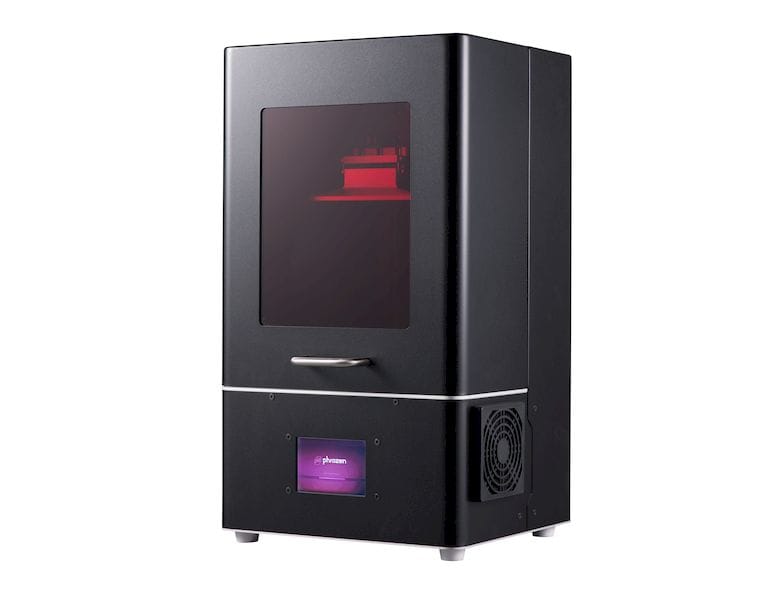![The Phrozen Shuffle desktop 3D printer [Source: Phrozen]](https://fabbaloo.com/wp-content/uploads/2020/05/image-asset_img_5eb0a97de73c3.jpg)
Taiwan-based Phrozen has announced a new resin-based desktop 3D printer that has some interesting new features – and an incredible price.
The company has previously produced several resin-based 3D printers, but the Phrozen Make and the larger Phrozen 1.5 are more expensive. In spite of that, they are both very popular machines. The Make in particular was funded on Kickstarter to USD$360K+ in very short order: over 300 backers received their equipment.
Now they’re announcing a new machine, the Phrozen Shuffle, a kind of lower cost – but with extra features machine.
Like its predecessors, the Shuffle is a resin based machine that uses an LCD array to quickly illuminate an entire print layer simultaneously. This is a faster process than those that use lasers, which must laboriously traverse all solid portions of each print layer.
But the company has introduced an interesting improvement to their optical system, which they call “ParaLED”. According to Phrozen, many similar desktop resin-based 3D printers will use a small LED light source that is spread over the LCD array by means of a fresnel lens apparatus. This results in light passing through the LCD at an angle.
The angle means that the light penetrating the liquid resin is not optimal; in order to penetrate more deeply you’d have to either increase the strength of the light source (impossible on a fixed LED source) or lengthen the exposure time.
![Print quality from the Phrozen Shuffle appears excellent [Source: Phrozen]](https://fabbaloo.com/wp-content/uploads/2020/05/image-asset_img_5eb0a97e6ded5.jpg)
The ParaLED system is different in that it uses an LED source that is the same size as the LCD panel, making the light pass through all in parallel for optimum – and speedier – exposure. This should increase the speed of printing and the print quality.
How fast is the system? They say it can 3D print objects at 30mm per hour, which is the same regardless of the object size or geometry due to the nature of the LCD printing engine.
In their system design, the only major moving component is the Z-axis, which raises the print surface in the resin tank. They’ve beefed up this mechanism by strengthening the extruded aluminum structure and including dual linear rails. This should provide an even more stable system that could aid in increasing print quality by reducing wobbles, which are so evident in any system expecting high resolution.
You might expect the build volume on the Shuffle to be tiny, as is the case with almost all resin-based desktop machines. In this case, the Shuffle’s build volume is in fact quite large, as far as resin machines go: 120 x 68 x 200mm. That should enable printing of reasonably large, but finely detailed objects.
![More sample 3D prints from the Phrozen Shuffle [Source: Phrozen]](https://fabbaloo.com/wp-content/uploads/2020/05/image-asset_img_5eb0a97ebc7b3.jpg)
The machine also accepts any usable resin that reacts to 405nm light, and is thus an open materials machine. This could lower operational costs as compared with other units requiring proprietary materials.
The company has also added a color touch panel for direct operations, and a WiFi connection for operation via network. The machine also has a one-year warranty, somewhat longer than most warranties from other manufacturers.
These features sound good, but the really interesting part is the price of the Shuffle, set at NT$19,900 (USD$650). They even had a launch price of NT$15,500 (USD$500), but it is not clear whether this is still available.
Regardless, either price is quite low for a machine with these capabilities. Typically low-priced resin 3D printers have very small build volumes and are stripped of other features. That does not seem to be the case with the Phrozen Shuffle.
Their Kickstarter opens today, but like every other crowdfunding launch, we’d recommend you review our checklist to ensure this project is really for you.
Via Phrozen

